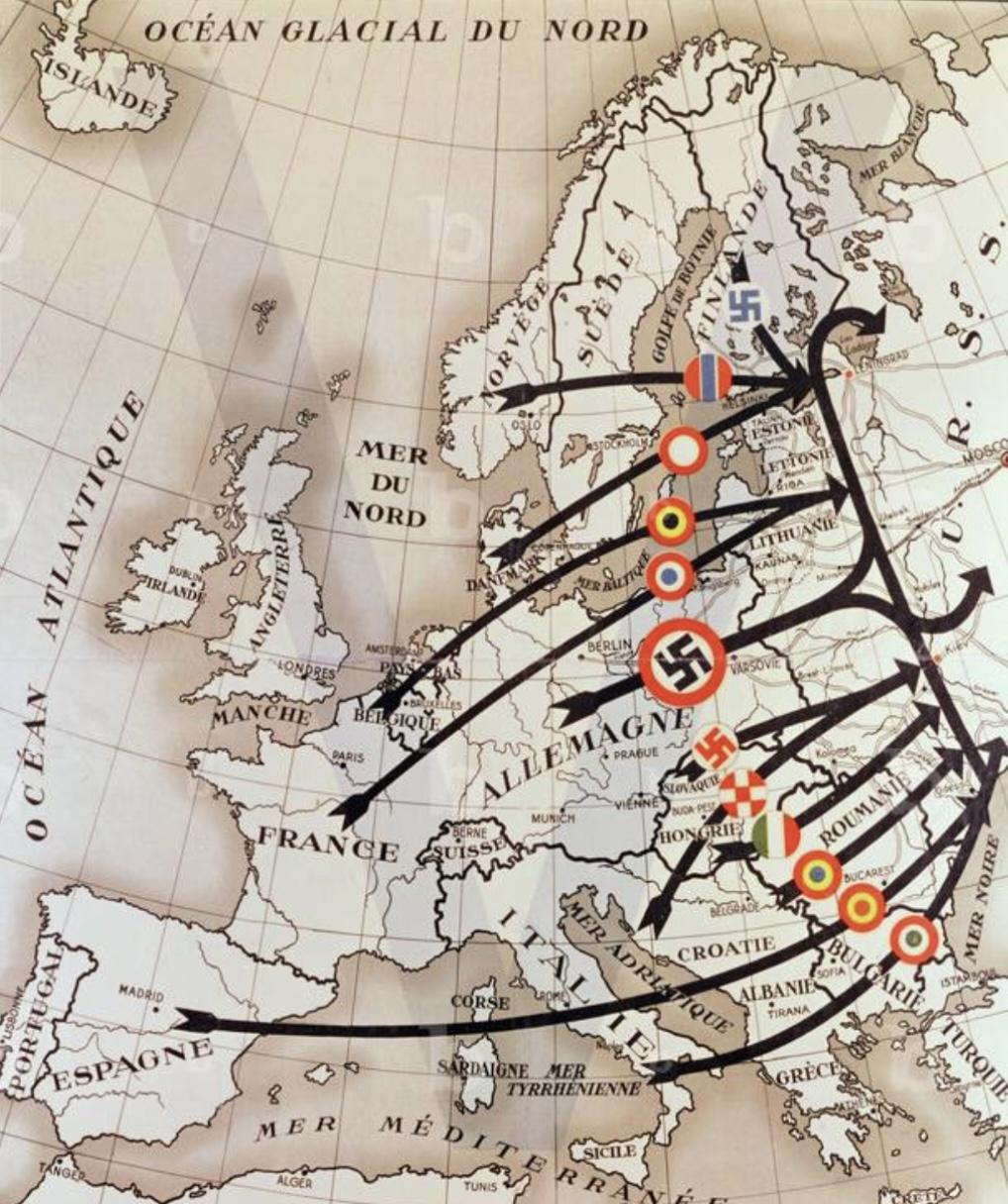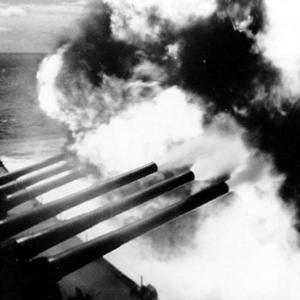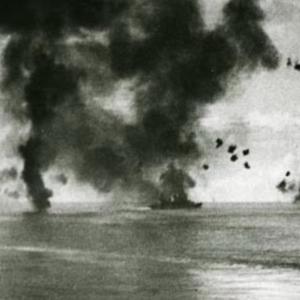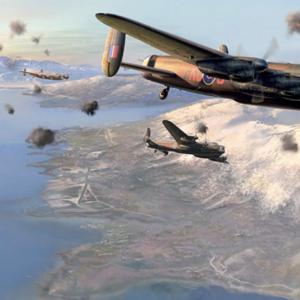
On this day in military history…..
Operation Barbarossa, launched on June 22, 1941, was Nazi Germany’s colossal military invasion of the Soviet Union during World War II. It was Adolf Hitler’s boldest gamble—aimed at defeating Soviet communism, seizing vast territories and resources, and securing Eastern Europe as part of the Nazi vision of a Greater German Reich. It remains the largest invasion in military history, measured by the number of troops, tanks, aircraft, and the geographic expanse involved.
The campaign marked a pivotal moment in the war, opening up the Eastern Front—the largest and bloodiest front in WWII. German military leaders believed that a quick, decisive campaign would destroy Soviet resistance before the winter of 1941. The operational objectives included capturing Leningrad in the north, Moscow in the center, and the agricultural and industrial heartland of Ukraine in the south.
Despite early successes, the operation became a grueling, attritional conflict that the Germans were unprepared to sustain.
Germany and its Axis allies committed approximately 3.8 million soldiers to the invasion. It included not just German Wehrmacht forces but also troops from Romania, Hungary, Finland, Italy, and Slovakia. The scale and complexity of the operation were immense, with the German invasion force divided into three Army Groups, each commanded by an experienced senior field marshal or general:
Army Group North was commanded by Field Marshal Wilhelm Ritter von Leeb. This group’s objective was to advance through the Baltic states and capture Leningrad (present-day St. Petersburg). Von Leeb was a World War I veteran and considered one of Hitler’s more cautious generals. His forces had to overcome fortified Soviet positions and cover vast forested and swampy terrain.
Army Group Centre was led by Field Marshal Fedor von Bock. This was the most powerful and central thrust of the invasion, aimed at Moscow. Bock was a career officer known for his aggressive style and loyalty to Hitler’s strategic vision. His group included two of Germany’s most effective panzer generals: General Heinz Guderian, commanding Panzer Group 2, and General Hermann Hoth, commanding Panzer Group 3. Together, they spearheaded some of the war’s largest encirclements.
Army Group South was commanded by Field Marshal Gerd von Rundstedt. This group was responsible for capturing Ukraine and advancing toward the oil-rich Caucasus. Von Rundstedt, the oldest of the army group commanders, was a seasoned and respected field marshal. His chief armored commander was General Ewald von Kleist, who led Panzer Group 1 and played a major role in early breakthroughs in Ukraine, particularly in the massive encirclement at Kiev.
Supporting these main groups were additional senior officers and field commanders. Colonel General Erich Hoepner led the 4th Panzer Group under Army Group North. Generaloberst Maximilian von Weichs supported Guderian with the 2nd Army. General Eugen Ritter von Schobert initially commanded the 11th Army in the south, later succeeded by General Erich von Manstein, who would become one of Germany’s most influential commanders on the Eastern Front.
Germany’s invasion force was massive. It included approximately 3,350 tanks and assault guns, over 7,000 artillery pieces, about 2,770 aircraft from the Luftwaffe, 600,000 motor vehicles, and 600,000 horses used for transport and logistics. The Luftwaffe, led by Hermann Göring and senior officers such as Albert Kesselring and Alexander Löhr, established early air superiority, destroying thousands of Soviet aircraft on the ground and supporting ground operations with dive-bombers and fighters.
In contrast, the Soviet Union initially had between 2.5 and 3 million troops positioned in its western military districts. It also had over 20,000 tanks—many of them outdated—and around 10,000 aircraft, with limited pilot training and poor maintenance. Although numerically superior in some areas, the Red Army suffered from disorganization, communication breakdowns, and the after-effects of Stalin’s purges, which had eliminated much of the experienced officer corps.
German strategy relied on surprise and rapid movement. The Blitzkrieg method—coordinated attacks by tanks, mechanized infantry, and air power—was applied on a massive scale. In the early stages, German forces achieved rapid success. Entire Soviet armies were encircled and destroyed in battles such as Białystok-Minsk, Smolensk, and Kiev. Hundreds of thousands of Soviet soldiers were killed or captured. German morale was high, and the Wehrmacht seemed unstoppable.
However, as German forces pushed deeper into Soviet territory, their supply lines became overstretched. The vast distances, poor road conditions, and lack of infrastructure slowed progress. The logistical demands far exceeded what the German army could support, and reliance on horses and captured Soviet rail systems proved inefficient.
Meanwhile, the Soviet Union began relocating its industrial base east of the Ural Mountains, out of German reach. Entire factories were dismantled and moved by rail, then reassembled in the interior. Production of weapons, especially the T-34 tank and new aircraft, increased rapidly. The Red Army also began to regroup under more capable leadership, with generals like Georgy Zhukov rising to prominence.
Despite the early victories, Germany failed to achieve its strategic objectives. Leningrad was surrounded but not captured. Moscow was approached but held firm through determined Soviet defense and reinforcements. In Ukraine, German forces occupied large areas but faced stiff resistance and ongoing partisan attacks.
By December 1941, the operation had stalled. The onset of the Russian winter, combined with the Soviet counteroffensive near Moscow, forced German troops to retreat from their advanced positions. Ill-equipped for winter combat, many German units suffered frostbite, equipment failures, and low morale. Hitler’s insistence on holding ground at all costs led to heavy losses.
Operation Barbarossa, originally conceived as a lightning campaign, turned into a prolonged war of attrition. It was a strategic failure for Germany and marked a turning point in World War II. The Eastern Front, now fully engaged, became the decisive theater of the conflict. From that point forward, the momentum began to shift toward the Soviet Union, which would eventually drive German forces all the way back to Berlin.










